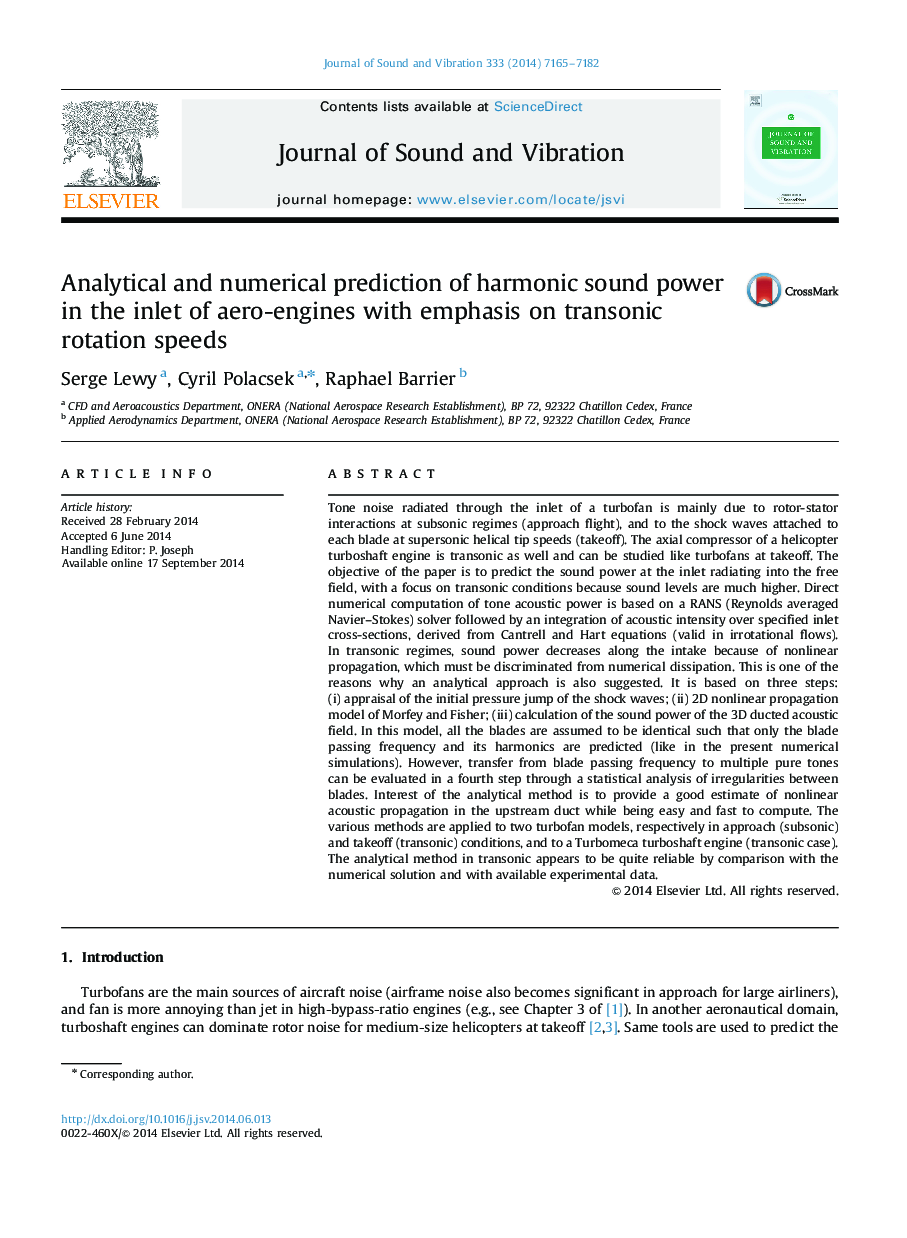| کد مقاله | کد نشریه | سال انتشار | مقاله انگلیسی | نسخه تمام متن |
|---|---|---|---|---|
| 287757 | 509585 | 2014 | 18 صفحه PDF | دانلود رایگان |
Tone noise radiated through the inlet of a turbofan is mainly due to rotor-stator interactions at subsonic regimes (approach flight), and to the shock waves attached to each blade at supersonic helical tip speeds (takeoff). The axial compressor of a helicopter turboshaft engine is transonic as well and can be studied like turbofans at takeoff. The objective of the paper is to predict the sound power at the inlet radiating into the free field, with a focus on transonic conditions because sound levels are much higher. Direct numerical computation of tone acoustic power is based on a RANS (Reynolds averaged Navier–Stokes) solver followed by an integration of acoustic intensity over specified inlet cross-sections, derived from Cantrell and Hart equations (valid in irrotational flows). In transonic regimes, sound power decreases along the intake because of nonlinear propagation, which must be discriminated from numerical dissipation. This is one of the reasons why an analytical approach is also suggested. It is based on three steps: (i) appraisal of the initial pressure jump of the shock waves; (ii) 2D nonlinear propagation model of Morfey and Fisher; (iii) calculation of the sound power of the 3D ducted acoustic field. In this model, all the blades are assumed to be identical such that only the blade passing frequency and its harmonics are predicted (like in the present numerical simulations). However, transfer from blade passing frequency to multiple pure tones can be evaluated in a fourth step through a statistical analysis of irregularities between blades. Interest of the analytical method is to provide a good estimate of nonlinear acoustic propagation in the upstream duct while being easy and fast to compute. The various methods are applied to two turbofan models, respectively in approach (subsonic) and takeoff (transonic) conditions, and to a Turbomeca turboshaft engine (transonic case). The analytical method in transonic appears to be quite reliable by comparison with the numerical solution and with available experimental data.
Journal: Journal of Sound and Vibration - Volume 333, Issue 26, 22 December 2014, Pages 7165–7182
